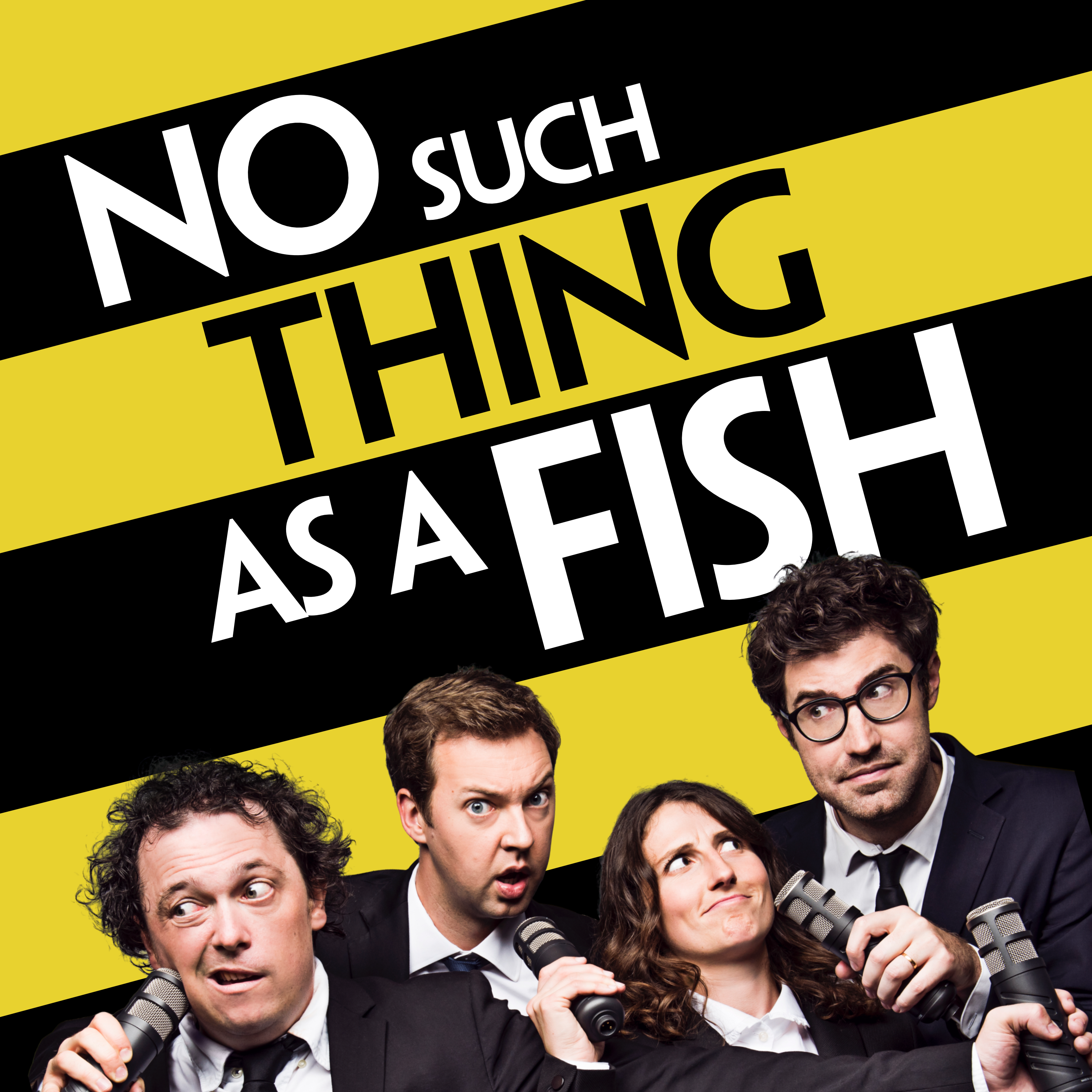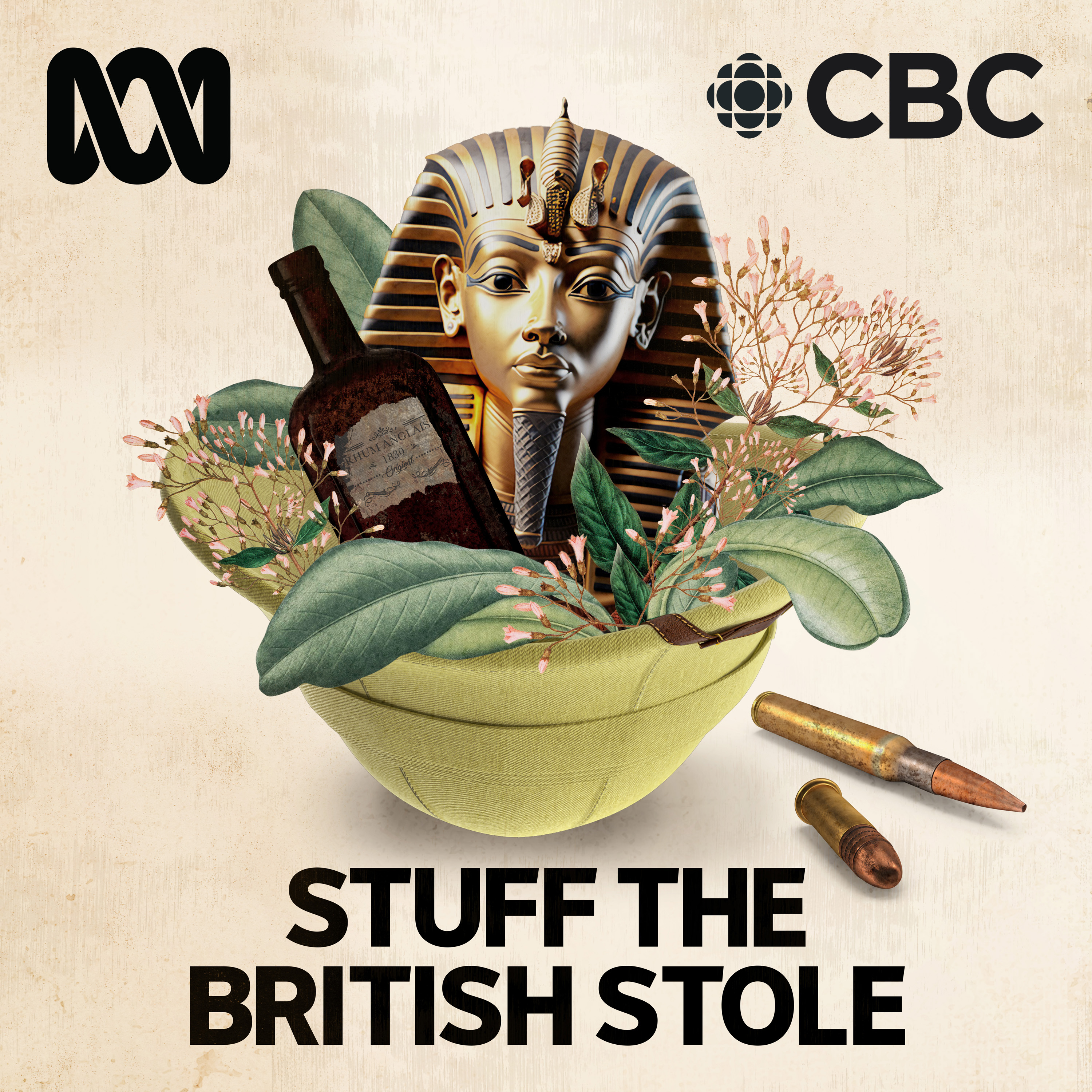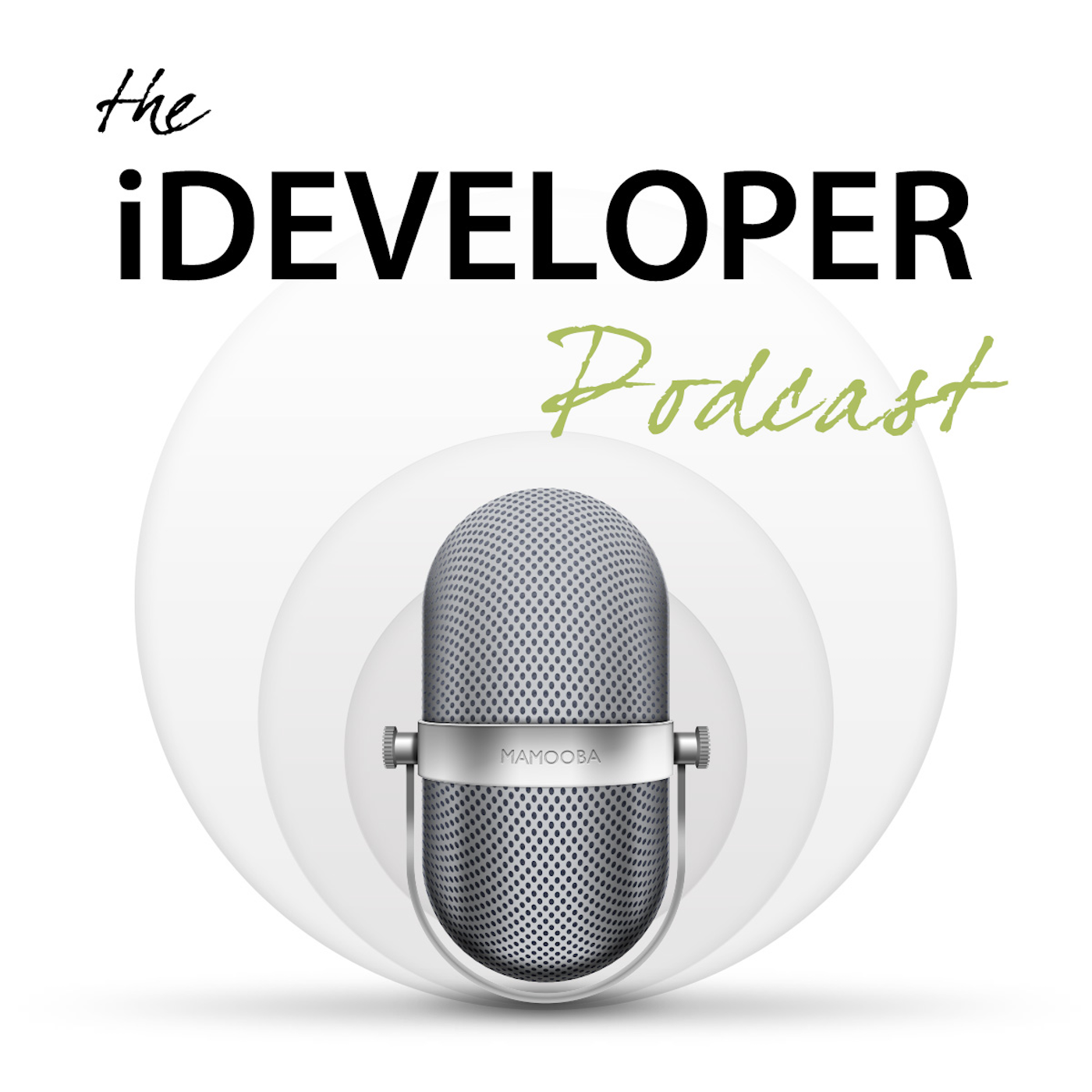
Piano, finally
Piano Finally is a podcast by an old bloke who is learning the piano, finally. I cover the process of learning the piano and music theory as an adult learner. I also review piano books, hardware and other materials from an adult learner's perspective.
Piano, finally
Episode 56 - Leaving Evidence
🎙 Episode 56 – Leaving Evidence
G’day, and welcome back to Piano, Finally, where each week I share the detours, lessons, and progress from learning piano later in life. This week’s episode was written from the foyer of the Bell Shakespeare Company’s theatre, ahead of a performance of Coriolanus—more on that at the end.
🎭 Term’s over, holidays have begun, and with piano lessons on break too, I’m gearing up for more time at the keys. Devi’s set a new goal for next term: get off the page and start improvising. She’s also locked in the date for this year’s piano showcase—Saturday, 21 September.
📺 YouTube Feature – Improvising Like the Masters
A timely find: Tom Donald from the London Contemporary School of Piano improvises well-known melodies in the styles of Bach, Mozart, Chopin, Rachmaninov, Messiaen, and more. It’s not a polished performance video—he talks through what he’s doing and leaves the rough bits in. It’s thoughtful, human, and inspiring. Watch it here and also check out his companion video.
LCSP Website
📝 Essay – Leaving Evidence
Thinking about history, The Rest Is History podcast, and how future historians figure out what happened… led me to wonder: how are we documenting our piano journeys? With modern phones, recording your playing is easier than ever—and worth doing. It helps you see progress, keeps motivation up, and creates a record of how far you’ve come. It doesn’t need to be public—YouTube and Instagram both offer private uploads—but it should exist. Leave yourself some evidence.
The Rest Is History Live Tour
🎹 Nord Stage 4 Review – The Synthesiser Section
This week, I explore the Nord Stage 4’s synthesisers. With three independent synth engines—subtractive, FM, and sample-based—you can combine sounds in endless ways. I’m currently learning sound design through Syntorial, and the Nord keeps up beautifully. Waveform visualisation on the Stage 4’s second display has been a huge help. A full FM section review is coming soon.
Want to try your own custom setups? Marc Larochelle of My Keys To Music has some brilliant ones, including a Riders on the Storm setup with thunderstorm samples. I’m working on it… but it’s not quite ready for public ears yet.
🎼 Progress
Just one piece this week: Wild Chase by Wynn-Anne Rossi. I’m through the first eight bars and working on the next. It’s one of those pieces where both hands have to be involved from the start. Still too slow, but hey—“As fast as you can” is relative.
Played on the Kawai NV10 with the Claire Fazioli f308 virtual piano by Native Instruments. Claire Bundl
You can contact me:
- via email at david@pianofinally.show; this is probably the best option
- the show website, www.pianofinally.show
- Instagram and Threads @pianofinally
- and on YouTube
- all the podcast directories - list
- here's the RSS feed
Some of the links to books and other items mentioned in the podcast may affiliate links for Amazon or other providers. If you use one of these links, a commission may be paid to me at no additional cost to you. Thank you if you use a link.
All reviews of products, websites and services are unpaid, and no sponsorship has been received for any content on this podcast.
G'day everyone, I'm David Reidy. Welcome to Piano Finally, a podcast by an old bloke who's getting around to learning the piano, finally. Welcome to show 56. Thank you very much for listening. If this is the first time you're hearing the podcast, I hope you enjoy what's in the show. If you're back for another episode, then thanks for returning. If you too are learning a musical instrument, let me know how you're going with it. You can contact me at david at pianofinally.show. I'm starting to think that this part of each show should be called From the Foyer, as once again this week I'm spending time in a theatre foyer preparing the podcast. This week, the foyer is in a refurbished finger wharf in Sydney that is home to the Bell Shakespeare Company. I'm here to see Shakespeare's Coriolanus, a play I haven't seen performed before. It should be interesting, as in the reminder email they have said that the audience will be divided into the plebeians and the patricians, matching the class structure in ancient Rome. It's based on seat number. I will be in the patrician section. I'll put a short review at the end of the episode. It's the beginning of the mid-year holidays, so I have two weeks to get things done around the house. Piano lessons will recommence after the holidays, and during the week, Debbie got in contact with me with some suggestions for the upcoming term. One of the suggestions is to get off the written page somewhat and just play, so it looks like there will be some improvising coming up. Debbie has also set the date for the piano showcase. It will be Saturday the 21st of September, so now I have a date to aim for. I'll have to get something ready. I didn't get a lot of extra music in this week. The last week of term is always a bit scattered, getting everything squared away before the holidays. The wild weather Sydney experience didn't help. Still, with the next two weeks off, I should be able to get some additional practice time in. The London Contemporary School of Piano is an organisation set up in Baker Street, London, that offers in-person and online piano lessons for children and adults. In addition to their courses, they have a website with a large selection of articles and resources available at no cost. They also have a YouTube channel. Over the last year, I have watched a number of their videos, but this week, their latest one caught my attention, especially after my last-term report from Devi. The school and channel are run by Tom Donald, who, although the school is in London, is definitely not from there. He's from Coonabarabran, a town in northwestern New South Wales, near to the Australian Astronomical Observatory, a place I have visited many times. Tom started the LCSP in 2011, with an emphasis on improvisation and a move away from conventional exams. I'll include a link to the school in the show notes. In this week's video, Tom creates a number of improvisations based on contemporary tunes in the style of different famous composers. It's not just a sit down and play video. Tom explains his thinking and is clearly working it out as he goes, which is what improvising is meant to be all about. And he has left the less successful attempts in. At one point, Tom attempts to improvise a theme by Andrew Lloyd Webber in the style of Rachmaninoff. and as he points out, it doesn't really work. But it's really interesting to see how he approaches it. The video starts with Bach and Mozart, and moves on to Chopin and Liszt, Rachmaninoff, Messiaen, and ends with Shostakovich. Shostakovich is, of course, quite dissonant, and Tom ends by encouraging pianists to embrace dissonance somewhat more than many currently do. It's clear he's passionate about the subject. It's not really a how-to video. It's Maura, here are some ideas video, and it works well with another video from the channel about improvising in classical style. These videos are a lot of fun and really thought-provoking, and it should inspire some fun times at the keyboard. There are links to the videos in the show notes. Leaving evidence. One of my favourite podcasts is The Rest is History. It's mostly two historians talking about different events in world history in very great depth. It's a great listen and I already have tickets for the live show they are doing at the Sydney Opera House towards the end of this year. Quite often Tom and Dominic will talk about the sources that historians have used for their conclusions, the evidence that has been left behind, often by people just going about their normal day-to-day lives. This got me thinking about the evidence we all leave behind of our piano journeys. Of course, if you're a world-famous pianist with a Deutsche Grammophon recording contract, then evidence of your playing will be plentiful and available for posterity. But most of us are not such players. Since the widespread use of mobile phones and their cameras, and the automatic uploading of images to offline storage repositories, it is trivial to leave a trail of evidence about what you have seen and done. Adding to that, the archiving of almost all social media content, and it should be easy to reconstruct a reasonable picture of what people were up to at any time. There is a line in the movie, The Social Network, where a character says that the internet is not written in pencil, it's written in ink. Much of what ends up in our permanent records is trivial. It is material that is once of passing interest, but is now unimportant. But what about the things we do consider important? I'm guessing that although many of us are learning the piano as a hobby or leisure activity, it is still important to us. After all, the costs, both in time and money, involved in purchasing an instrument and taking lessons and buying resources, mean that we must be attaching some level of significance to it. So, what are we doing to ensure that some of our piano journey remains around, so that we can revisit it if we want? We need to make recordings. Just as almost everyone has a high quality camera with them most of the time, those same people have an excellent quality audio recorder too. It may not be the same standard as professional recording equipment, but the microphones and processing in an average mobile phone are enough to make a decent record of what you're doing at the piano. And it's easy to do. But why would you want to record yourself? Because humans don't notice slow change very well. If you see the same people every day, you won't notice them changing, unless they get a radically different hairstyle. But look at a photo from a couple of years ago, and those gradual changes mount up and are apparent. It's the same with our piano progress. Regular progress means that you will continually improve, but most day-to-day improvement is slight. Occasionally, something might just click, like suddenly being able to play Alberti bass, but more often, it is just in small increments. and that's why you should record. Mobile phones have voice memo software and using it is often as simple as tapping one button, so you don't have the excuse that recording is too tricky. The stand you are using for the music is also an excellent place to put the phone while it's recording. iPhones have their primary microphones at the bottom of the phone, so putting it upside down on the music stand makes for a clearer recording. So you've got your recording. What It is probable that your device will upload it to some storage somewhere. If you have automatic backups on your mobile, then there is a permanent record, as long as you keep using the same services. A more permanent solution is to use one of the sharing services, such as YouTube or Instagram. Don't worry if you're not ready to share your playing with the world. YouTube offers private videos, so no one else can access them. And Instagram has a similar sharing option, so effectively no one gets to see them unless you invite them. But they stay there for you, regardless of what devices or other services you use. Having left the evidence of your playing, the real payout comes when you go back to your old recordings and hear the progress you have made. All those imperceptible small steps will have added up to giant leaps. And nothing is more motivating than the distance you have behind you. The third section of the Nord Stage 4 keyboard is the synthesizer section. The Nord has three independent synths, which can do subtractive synthesis, frequency modulation synthesis, and run audio samples. Each can be used individually or in combination with any or all of the other instruments on the keyboard. The synthesizer section is by far the most complex part of the keyboard, and the one that gives you the greatest amount of flexibility in making sounds. Starting with the analog synthesizers and the subtractive synth section, there are sine, triangle and soar, a variety of square and pulse waveforms, and white noise. All of these are modifiable into thousands of variants. Here's the sine wave. The triangle. The saw. The square wave. One of the short pulses. And finally the white noise. I think that you could spend years just exploring this section of the synthesizers. The synth capabilities of the Stage 4 are similar to the capabilities of Nord's dedicated synthesizer keyboards, such as the Wave 2. I'm continuing to work on the Synthorial program to learn more about about using synthesizers in sound design and then orders easily up to the tasks I have encountered so far in that course the synthesizer uses the second display on the stage 4 this is another monochrome LCD display that shows the settings and waveforms as you work with the synthesizer control I've found that being able to visualize the waveforms is a great help when working through the Sintorial lessons and it lets me know I'm on the right track when trying to match sounds. I was going to include an example of what you can do with the Nord by taking advantage of all of its parts. The example combines both the Rhodes Nefertiti electric piano from the piano section and a sample of a thunderstorm from the sampler part of the synthesizer. I was going to include it but it really isn't ready for public performance even here in the podcast. It needs a lot more work. I will keep at it and include it when I've got it working a bit better. The intended example was a bit of the doors riders on the storm. The parts and the setup came from Mark LaRochelle over at My Keys to Music as part of his Patreon benefits. This is the first time I have used a downloaded program and it couldn't be easier. It was simply a matter of dragging the supplied file into the sound manager application which installed all the required sounds and set up all the necessary settings, such as the keyboard hold and split. Mark's playing of the piece is great. I'm hoping that mine gets to an acceptable level. There's a lot more to the synthesizer section, far too much for one week, so I'll split this section of the review and spend some time in the coming week exploring the FM synthesis section, which I'll review in the next episode. the production of Coriolanus was excellent the cast of 10 covered all the roles with costume changes distinguishing the parts for a tragedy mostly about power and public perception there is a number of humorous interactions that played well Peter Carroll as Meninius did a great job balancing the serious and the comedic side of his role. The staging was very simple, with the audience split into two halves sitting opposite each other with a stage in between. It meant that everyone was much closer to the action than you normally get in a conventional theatre. If you get a chance to see any of the Bell Shakespeare productions, do so. They're a great evening at the theatre. If you'd like to contact me, email is the best way. You'll find me at david at pianofinally.show and the website at www.pianofinally.show. In both cases, Piano Finally is all one word. The show is also on Spotify and available as audio only on YouTube. You can subscribe via any popular iOS or Android podcast application or from directories such as Apple Podcasts, Spotify or YouTube. I also post an excerpt and link for each episode as an Instagram Reel. If you're learning an instrument, let me know where you are in your journey, what's going well, and what are the challenges. How are you managing your time? And so until next week, I hope your piano stays in tune, and you enjoy your time at the Keys. I'm including just the one piece this week in the progress, Wild Chase by Wynne-Anne Rossi. I'm confident with the first eight bars, and so I've been working on the next eight. This piece needs both hands from the start as the music moves between the hands so you really can't get anywhere with hands separately. The chord structure of the piece is such that it is easier to remember chord progressions in most places rather than the individual notes. The speed is still much too slow for the first part but the tempo marking for the end is as fast as you can so even my slow playing aligns with the instruction if that's as fast as I can go. The piece was recorded using the Kawai NV10 as the keyboard and native instruments Clare Piano on the M4 Pro Mac Mini emulating the Fazioli F308 classical grand. With the new audio setup using the Fazioli sounds amazing when sitting at the keyboard. Thank you.
Podcasts we love
Check out these other fine podcasts recommended by us, not an algorithm.

Connected
Relay
Upgrade
Relay
No Such Thing As A Fish
No Such Thing As A Fish
We Can Be Weirdos
Global
Stuff The British Stole
ABC and CBC
The iDeveloper Podcast
Steve Scott (Scotty) & John FoxRaven On: A Pop Culture Podcast
Natalie Bochenski & Stuart Layt
Smart Enough to Know Better
Dan Beeston & Greg Wah
TopMusic Piano Podcast
Tim Topham
The Chopin Podcast
Garrick Ohlsson and Ben Laude



